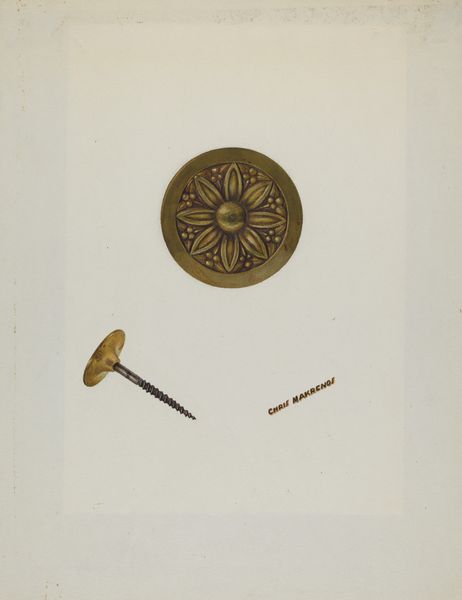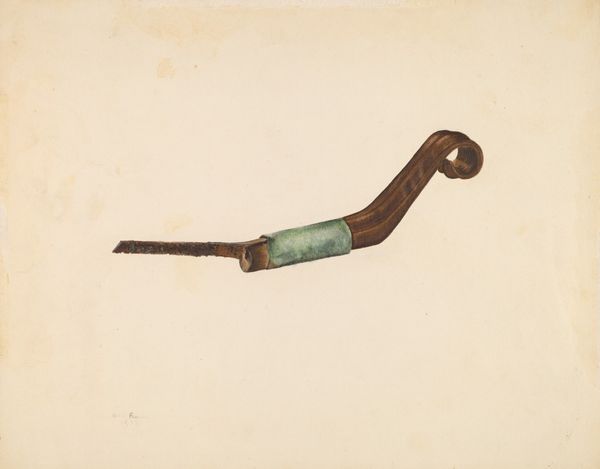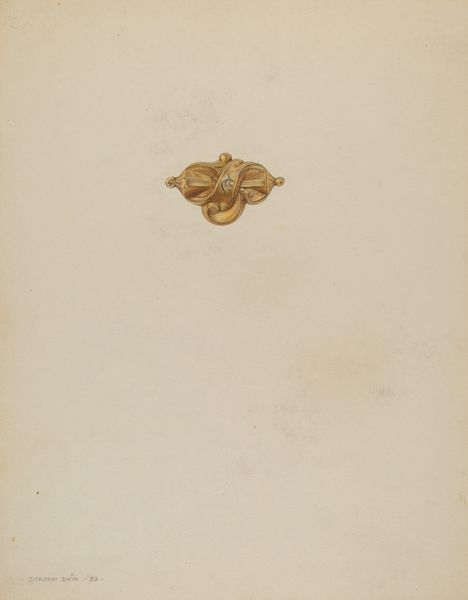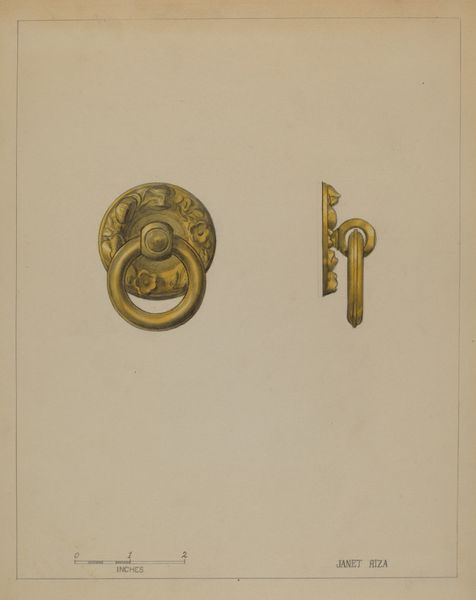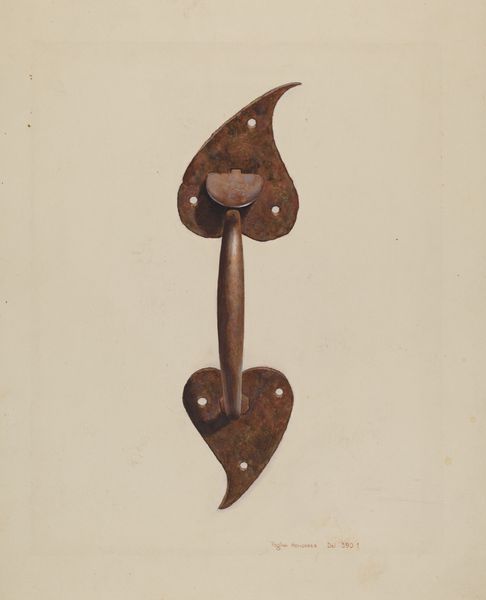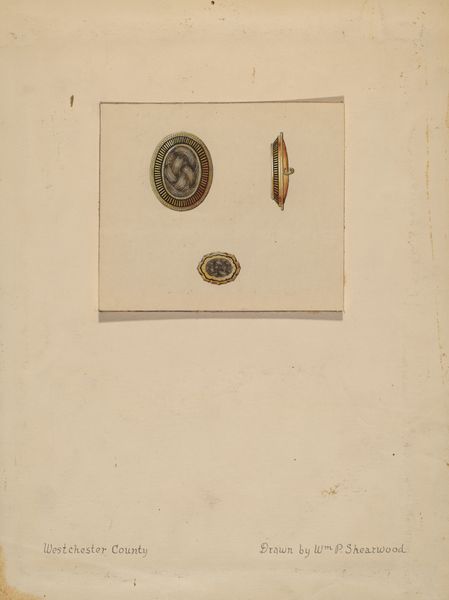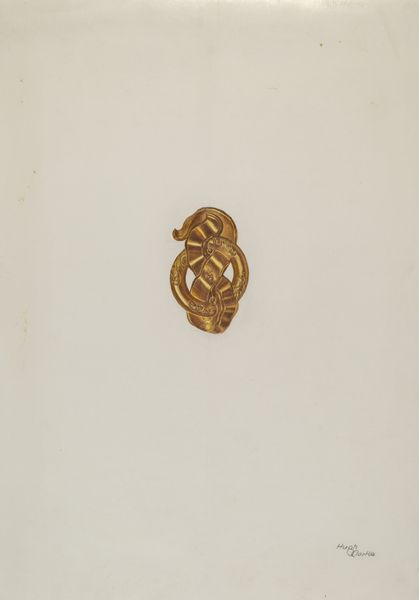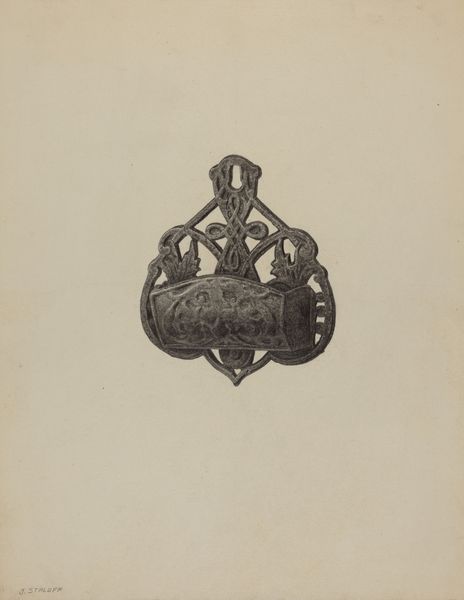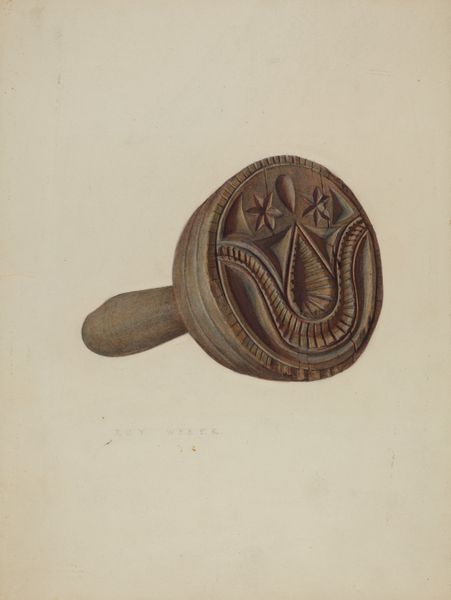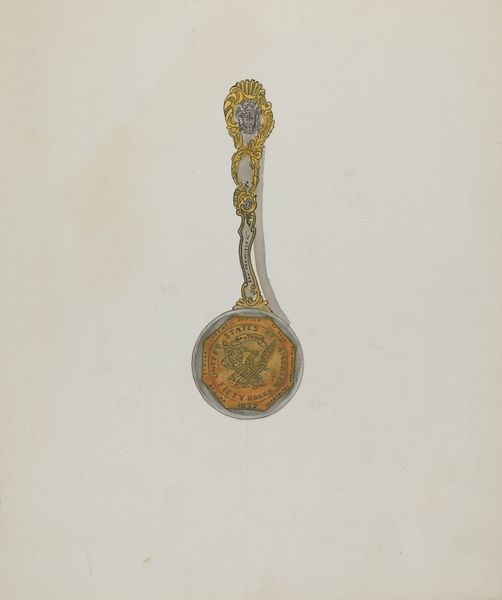
drawing, coloured-pencil, watercolor
#
drawing
#
coloured-pencil
#
watercolor
#
pencil drawing
#
coloured pencil
#
watercolour illustration
Dimensions: overall: 35.4 x 28.9 cm (13 15/16 x 11 3/8 in.)
Copyright: National Gallery of Art: CC0 1.0
Curator: Good morning. Today, we're examining John Wilkes's watercolor and colored pencil rendering of a "Zoar Butter Mold," circa 1939. What strikes you upon seeing it? Editor: The first impression is one of muted nostalgia, tinged with utility. The subject matter itself—a butter mold—speaks to the domestic, the everyday, and a simpler mode of production. Curator: Absolutely. Notice how Wilkes carefully delineated the mold’s structure: the symmetry of the carved floral motif, juxtaposed against the textured rim. It’s a celebration of form. Consider the careful shadowing; it elevates the object, abstracting it almost beyond its function. Editor: I’m immediately drawn to the artisanal qualities implied in this image. Someone, somewhere, labored to create this mold, imbuing the butter with a mark of their skill. It's the handmade made manifest and celebrated through rendering. Curator: Indeed, there's a delicate tension between craft and art present. How does the choice of medium enhance your understanding of its character? Editor: Watercolor and colored pencil give it a sense of approachable intimacy; a colder, photographic rendering would sever that critical tie to human making and to the texture of the wood itself. One almost feels one could pick it right up! Curator: Precision balanced by warmth characterizes Wilkes' skill in depicting everyday, almost obsolete items. He prompts us to consider how the artistry of useful objects elevates even the mundane. Editor: This image subtly demands we reflect on our relationship to the objects around us. Is there still evidence of thoughtful crafting in a modern, automated society? Do our daily-use products express this form of art in any way? Curator: It offers a certain window into the material culture of its era, captured beautifully via Wilkes's formal choices, while you point us towards labor and value outside the strictly aesthetic. Editor: Ultimately, I am glad to have considered art beyond the museum painting: in craft, home, and kitchen, celebrating all artistic output around us. Curator: Agreed. It expands the way we reflect upon those ubiquitous everyday tools, and for this dialogue, I have gained some enhanced aesthetic sensitivities myself.
Comments
No comments
Be the first to comment and join the conversation on the ultimate creative platform.
